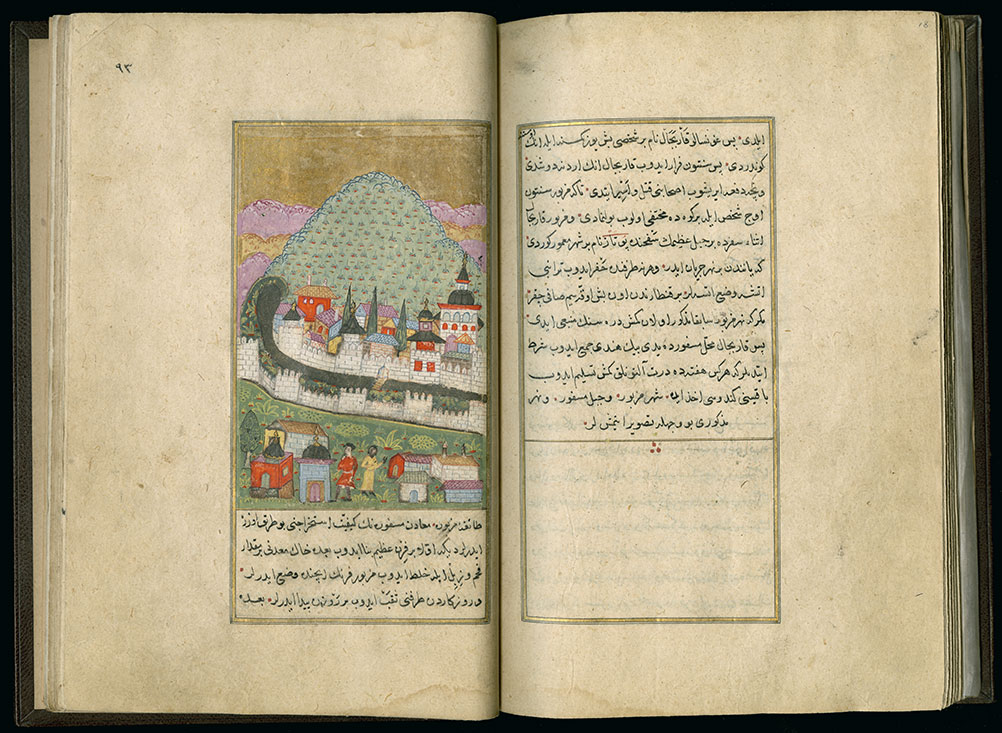Cieza de León’s spare rendering of the Cerro Rico and Imperial Villa de Potosi spawned numerous imitators, some of them hewing close to his original and others exaggerating or distorting certain features. Perhaps the most astonishing image of Potosí’s Cerro Rico comes from the Ottoman manuscript known as the Tarih-i Hindi-i Garbi, a compendium of descriptions and histories of ‘the Indies’ produced in Istanbul beginning in the late 16th century.
Potosi by Tarih-i Hindi-i Garbi
Kris Lane
Further reading
- Arzáns de Orsúa y Vela, B. (1965) Historia de la Villa Imperial de Potosí, 3 vols., edited by L. Hanke and G. Mendoza (Providence, RI: Brown University Press).
- Bakewell, P.J. (1985) Miners of the Red Mountain: Indian Labor in Potosí, 1545–1650 (Albuquerque, NM: University of New Mexico Press).
- Bakewell, P.J. (1987) Silver and Entrepreneurship in Seventeenth-Century Potosí: The Life and Times of Antonio López de Quiroga (Albuquerque, NM: University of New Mexico Press).
- Barragán Romano, R. (2019) Potosí global: viajando con sus primeras imágenes (1550–1650) (La Paz: Plural Editores).
- Bueuchler, R.M. (1981) The Mining Society of Potosí, 1776–1810 (Syracuse, NY: Syracuse University Press).
- Capoche, L. (1959) Relación general de la Villa Imperial de Potosí [1585]. BAE 122. Edited Hanke (Madrid: Atlas).
- Cole, J. (1985) The Potosí Mita, 1573–1700: Compulsory Indian Labor in the Andes (Stanford, CA: Stanford University Press).
- González Casasnovas, I. (2000) Las dudas de la corona: la política de repartimientos para la minería de Potosí (1680–1732) (Madrid: CSIC).
- Lane, K. (2019) Potosí: The Silver City That Changed the World (Oakland, CA: University of California Press).
- Mangan, J. (2005) Trading Roles: Gender, Ethnicity, and the Urban Economy in Colonial Potosí (Durham, NC: Duke University Press).
- Tandeter, E. (1993) Coercion and Market: Silver Mining in Colonial Potosí, 1692–1826 (Albuquerque, NM: University of New Mexico Press).





